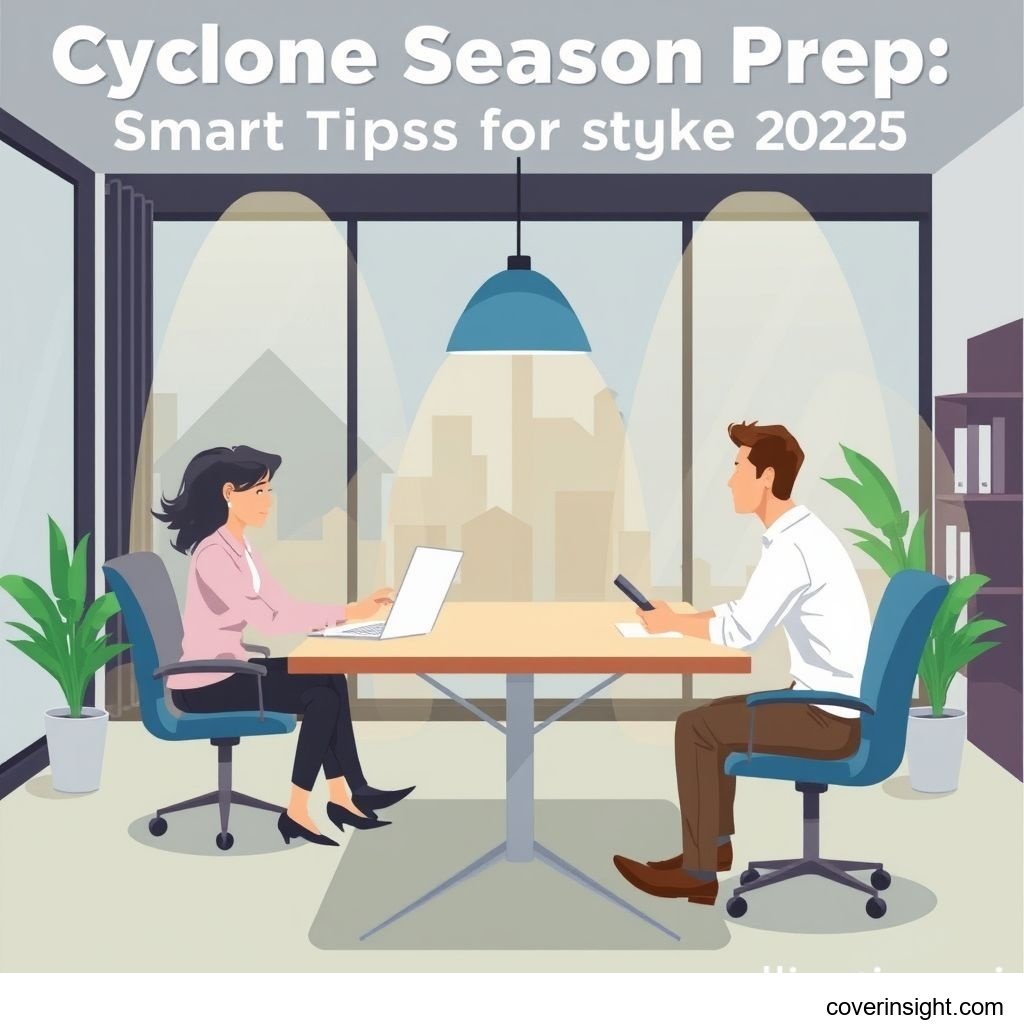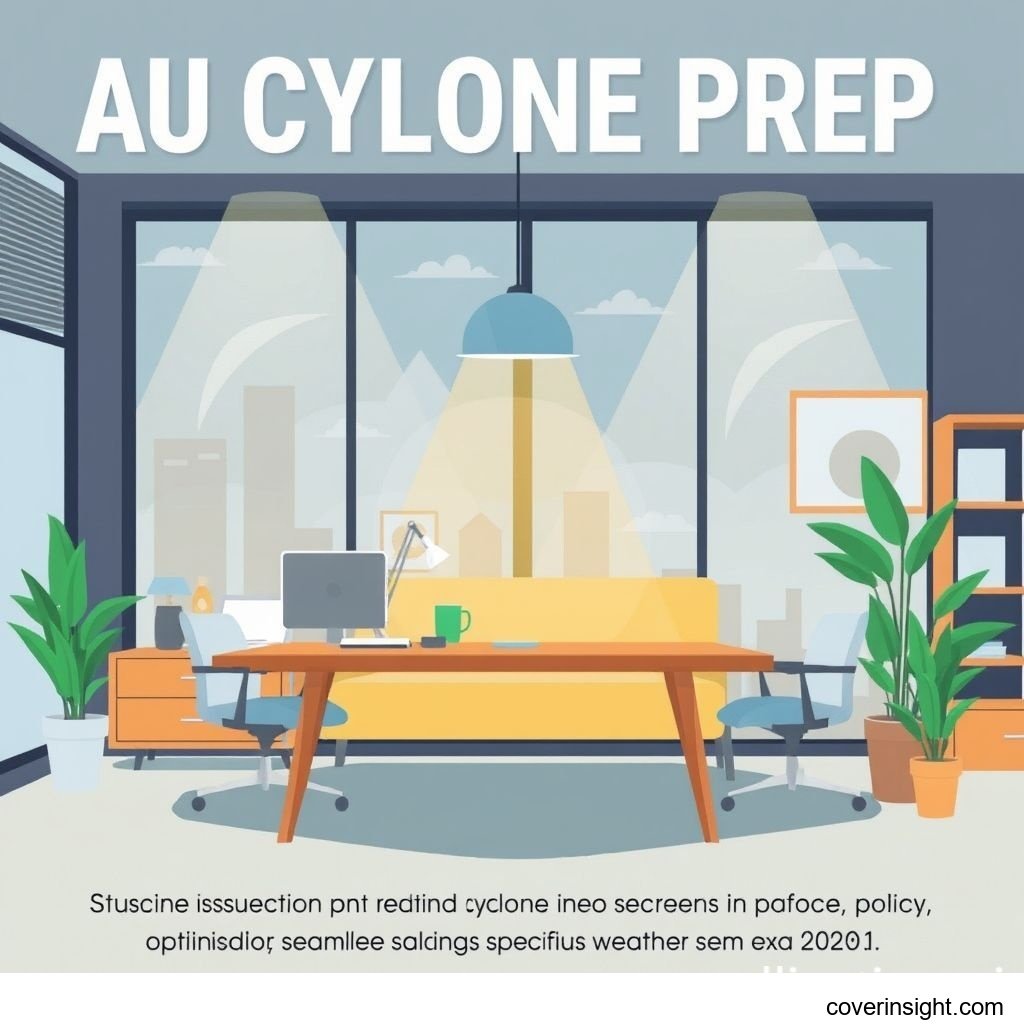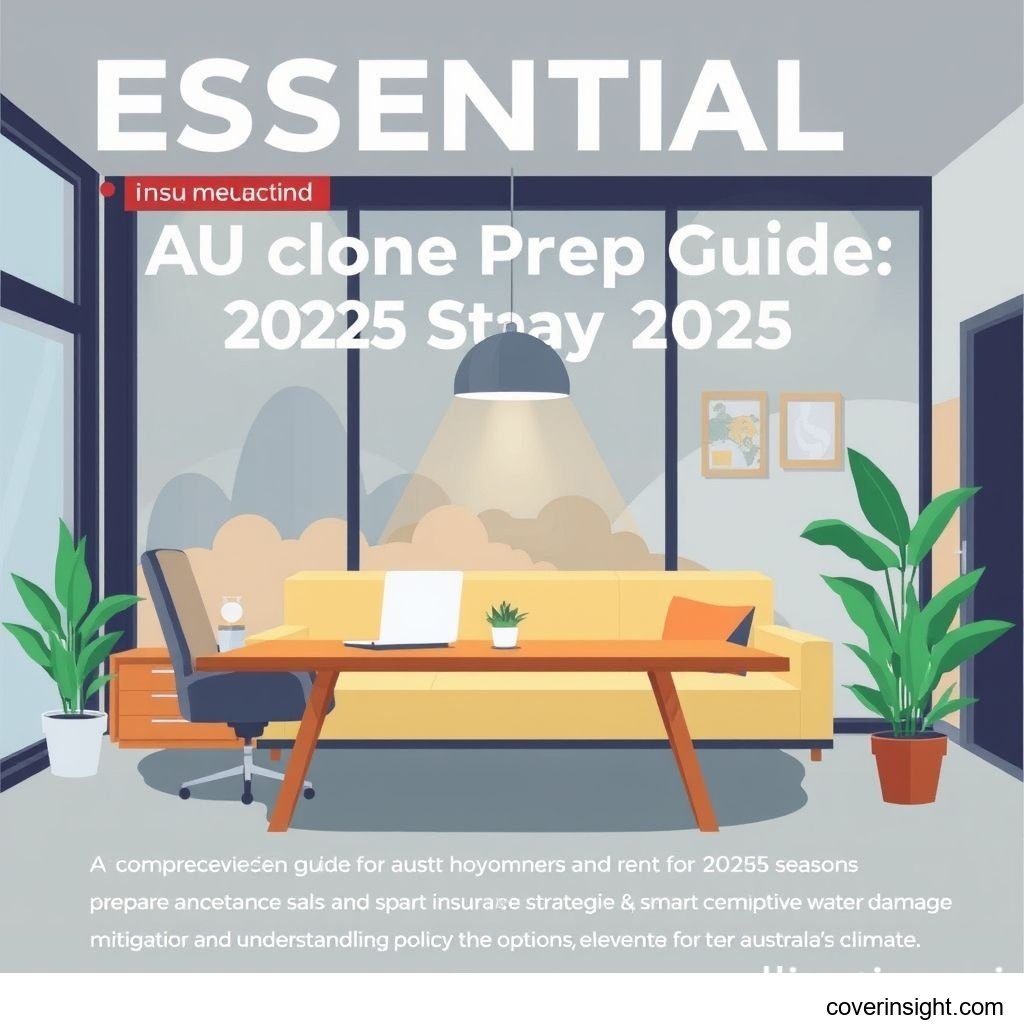Cyclone Season Prep: Smart Tips for Aussie Homes 2025
As the 2025 cyclone season approaches, it's high time for Aussie homeowners to batten down the hatches and get their ducks in a row. Preparing your home isn't just about peace of mind; it's a vital step to protect your biggest asset from the sheer force of nature. Every year, tropical cyclones bring a serious punch to parts of our sunburnt country, making proactive preparation not just smart, but absolutely essential. Think of it as giving your home the best chance to stand tall when the wild weather rolls in.
Coverage Details
When we talk about cyclone season prep, a big part of that often involves understanding what your home insurance actually covers, and what it doesn't. Getting this right can save you a world of hurt and a fair dinkum load of cash down the track.
What’s Included
Typically, a standard home and contents insurance policy in Australia will offer cover for damage caused by cyclones, which includes high winds, rain, and associated perils. This can extend to structural damage to your house, garages, and other outbuildings, as well as damage to your personal belongings inside. Many policies will also cover costs for temporary accommodation if your home becomes uninhabitable. For instance, after Cyclone Seroja tore through Kalbarri in Western Australia in 2021, causing an estimated $300 million in insured losses, many residents found their insurance was their lifeline, covering everything from roof repairs to replacing treasured furniture. It’s worth checking if your policy includes debris removal or emergency repairs, as these can be a massive help in the immediate aftermath. For a broader perspective on home protection, you might want to check out general Insurance Resources Global.
Common Exclusions
Now, for the nitty-gritty of what’s often not included. Flood damage, particularly from overflowing rivers or storm surges, is frequently an exclusion in standard policies and often requires a separate flood cover. Pre-existing damage, or damage that occurs because you didn't adequately maintain your property, won't be covered either – so keeping your roof in good nick and gutters clear isn't just good practice, it’s a must. There are also usually waiting periods for new policies, meaning you can't just buy cover the day before a cyclone is forecast. It's crucial to read the Product Disclosure Statement (PDS) like it’s your favourite novel.
Cost Analysis
Nobody likes paying for insurance, but it’s one of those necessary evils that pays for itself ten times over when you need it. Understanding the factors that drive costs can help you navigate the market.
Price Factors
The cost of your cyclone season preparation, particularly your insurance premium, can vary wildly. Your property’s location is a massive factor; homes in high-risk cyclone zones, particularly those in Northern Australia, naturally face higher premiums. For example, according to the Australian Prudential Regulation Authority's General Insurance Statistics, premiums in northern Queensland can be significantly higher than those down south due to the elevated risk of severe weather events. The age and construction type of your home also play a role – older homes or those not built to modern cyclone-resistant standards might cost more to insure. The sum insured for your building and contents, and any additional coverage you opt for, will also hike up the price.
Saving Tips
Want to save a few quid? Consider increasing your excess, but make sure it’s an amount you can comfortably afford if you do need to make a claim. Bundling your home and car insurance with the same provider can often net you a discount. Improving your home’s cyclone resistance, like installing cyclone-rated shutters or strengthening your roof, could potentially lead to lower premiums down the line – some insurers offer discounts for such measures. Regularly reviewing and comparing policies from different insurers is also a no-brainer; don't just stick with the first mob you find. You can often find great value by doing a bit of homework. For more specific local advice, check out AU Insurance Home resources.
FAQs
How much does cyclone season preparation cost?
The cost is a bit of a 'how long is a piece of string?' question, as it varies wildly. For home insurance, premiums can range from a few hundred dollars to several thousands annually, depending on your location, home value, and risk profile. Physical preparations like tree trimming, gutter cleaning, and securing loose items might be minimal, while installing cyclone shutters or a generator could cost thousands.
What affects premiums?
Premiums are influenced by your home's location (proximity to coast, historical cyclone activity), its construction type and age, the level of coverage you choose, your claims history, and any discounts you might be eligible for. The insurer's own risk assessment and business costs also play a part.
Is it mandatory?
While home insurance isn't legally mandatory in Australia, if you have a mortgage, your lender will almost certainly require you to have building insurance. As for physical preparation, it's not legally enforced, but it's a critical part of being a responsible homeowner in cyclone-prone areas to protect life and property.
How to choose?
Choosing the right policy means looking beyond just the price tag. Compare what’s covered, the exclusions, the excess amount, and any additional benefits. Read reviews, check the insurer's reputation (the Insurance Council of Australia can be a good resource), and most importantly, read that PDS! Make sure the coverage actually meets your specific needs.
Consequences of no coverage?
The consequences of having no or inadequate coverage can be absolutely devastating. If a cyclone damages your home, you'll be on the hook for all repair or rebuilding costs out of your own pocket. This can amount to hundreds of thousands of dollars, potentially wiping out your savings or even leading to financial ruin. It’s a gamble that’s simply not worth taking.
Author Insight & Experience:
As someone who's lived through a few hairy weather events up north, I can tell you from personal experience that there's nothing quite like the feeling of knowing you've done everything you can to prepare your home. The peace of mind alone is worth its weight in gold. I've seen firsthand how easily a "she'll be right" attitude can turn into a financial nightmare when a category three storm decides to pay a visit. Taking the time now to secure your property and sort out your insurance isn't just sensible; it’s an act of self-preservation for your home and your financial future. Don't be caught out when the wild weather hits – give it a go and get prepped!








Comments